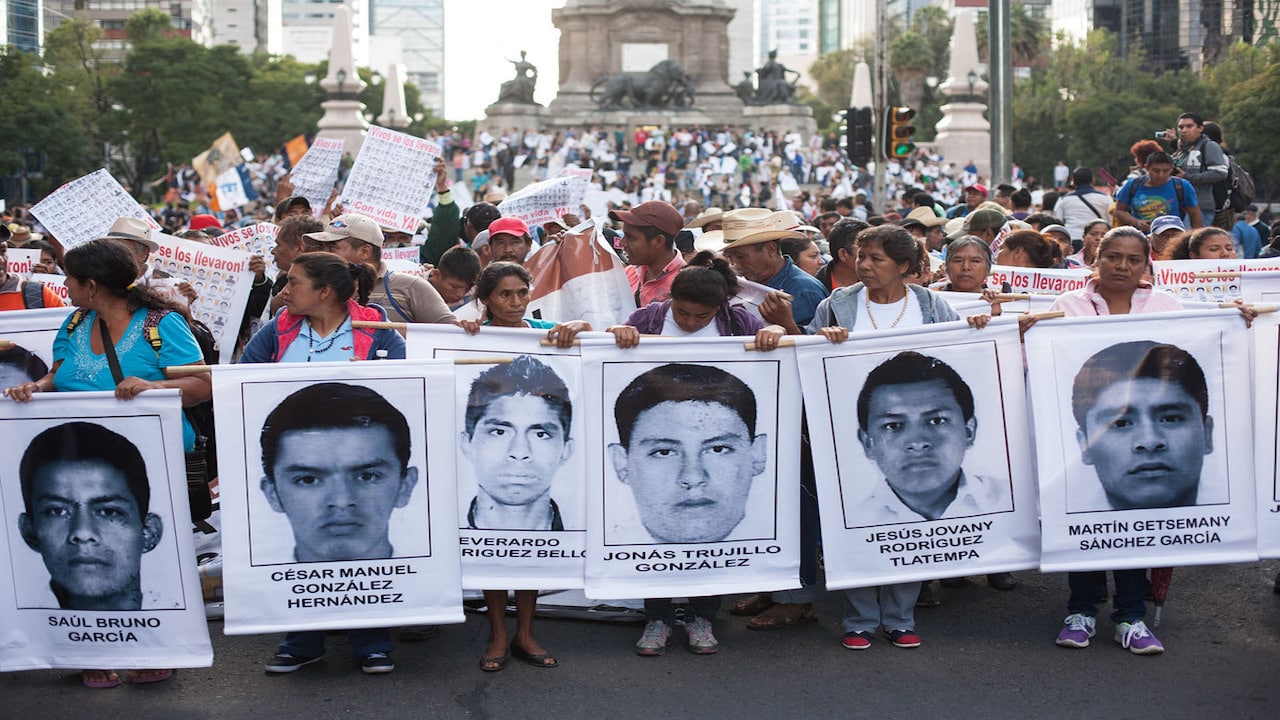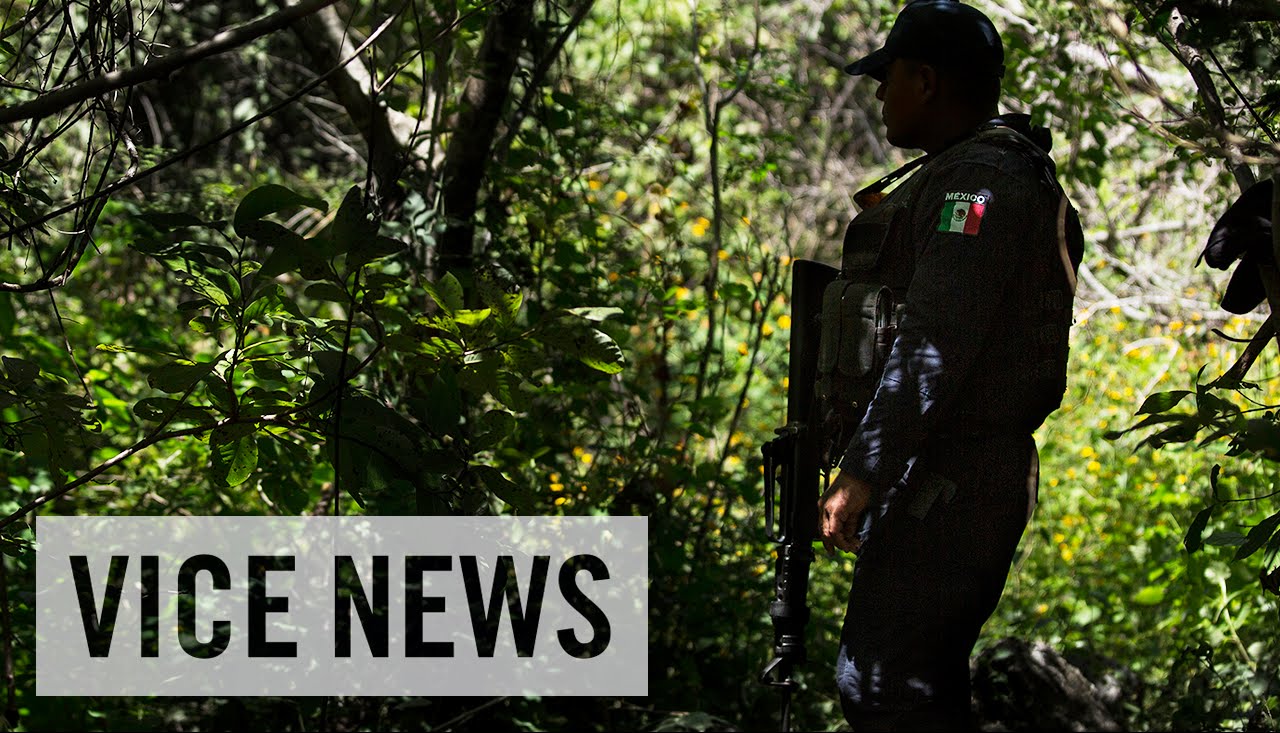When you hear about Mexico's disappeared students, it hits like a punch to the gut. Imagine this: 43 young lives vanished into thin air, leaving behind a nation grappling with grief, anger, and unanswered questions. This isn't just a headline or a statistic; it's a human tragedy that has shaken Mexico to its core. As we dive into this story, we'll uncover the layers of this haunting mystery and explore what led to such a catastrophic event.
You might be wondering why this matters so much, right? Well, it's not just about the numbers. It's about the faces behind those numbers, the families who are still searching for answers, and a system that's supposed to protect its citizens but seems to have failed miserably. This case is more than just a national scandal; it's a reflection of deeper issues plaguing Mexico's justice system, government accountability, and societal structures.
Before we get into the nitty-gritty, let me tell you something important: this isn't just a story from the past. The impact of Mexico's disappeared students continues to ripple through the country today. Families are still fighting for justice, activists are demanding transparency, and the world is watching closely to see how Mexico will address this monumental failure. So, buckle up because we're about to take a deep dive into one of the most harrowing stories of our time.
Read also:John Cusimano The Remarkable Journey Of A Tech Innovator And Visionary
A Brief Background on Mexico's Disappeared Students
Let's rewind to September 26, 2014, in Iguala, Guerrero, Mexico. That's the night everything changed. A group of students from the Ayotzinapa Rural Teachers' College went missing after a clash with local police. Now, here's the kicker: not just one or two students disappeared, but 43 of them. Can you wrap your head around that? Forty-three young people, gone without a trace.
This incident didn't just happen in a vacuum. The students were part of a long-standing tradition of activism, often protesting against government corruption and inequality. On that fateful night, they were reportedly preparing for a demonstration when things took a dark turn. The official story from the government initially suggested that the students were handed over to a drug cartel and killed, but many experts and investigators have called this narrative into question.
Key Facts and Figures You Should Know
Now, let's break it down with some key facts that paint the picture of this tragedy:
- 43 students went missing on September 26, 2014.
- The incident occurred in Iguala, Guerrero, one of Mexico's most violent states.
- The students were from the Ayotzinapa Rural Teachers' College, known for its activism.
- Initial investigations suggested involvement from local police and a drug cartel.
- As of today, no definitive answers have been provided, leaving families in limbo.
These facts aren't just numbers; they represent lives, dreams, and futures that were brutally cut short. It's crucial to understand the context because it sheds light on the systemic issues at play here.
The Role of Corruption in Mexico's Disappeared Students
Corruption is like a cancer that has eaten away at the heart of Mexico's institutions. In the case of the disappeared students, it played a starring role. Reports have surfaced suggesting collusion between local authorities and criminal organizations. Think about that for a second. The very people entrusted to protect citizens may have been complicit in their disappearance.
But why does this happen? Well, it boils down to a lack of accountability, transparency, and oversight. When corruption runs rampant, it creates a culture of impunity where criminals and corrupt officials operate with little fear of consequences. This environment allowed the tragedy of Ayotzinapa to unfold, and it continues to hinder efforts to bring justice to the victims' families.
Read also:Dorit Split The Ultimate Guide To This Trending Dance Craze
How Corruption Fuels Violence
Corruption isn't just about taking bribes or embezzling funds; it's about enabling violence and exploitation. In Guerrero, where the incident took place, drug cartels have significant influence over local politics. This power dynamic often leads to situations where law enforcement is either too afraid to act or actively working against the interests of the people they're supposed to serve.
For example, if a police officer is on the payroll of a cartel, they're more likely to protect the cartel's interests rather than uphold the law. This kind of arrangement can lead to devastating consequences, as we've seen in the case of the disappeared students.
International Reactions and Investigations
The world didn't sit idly by when news of the disappeared students broke. Governments, human rights organizations, and media outlets from around the globe condemned the incident and demanded accountability. The United Nations, Amnesty International, and other groups have conducted their own investigations, often criticizing the Mexican government's handling of the case.
One of the most prominent investigations came from the Interdisciplinary Group of Independent Experts (GIEI), which was commissioned by the Inter-American Commission on Human Rights. Their findings painted a starkly different picture from the official narrative, suggesting that the government's explanation was riddled with inconsistencies and inaccuracies.
Why International Pressure Matters
International pressure can be a powerful tool for change, especially in cases like this where domestic systems have failed. By shining a global spotlight on the issue, it becomes harder for those in power to ignore or sweep things under the rug. This external scrutiny can force governments to take action, even if it's just to save face on the international stage.
For the families of the disappeared students, international attention provides a glimmer of hope that justice might one day be served. It also serves as a reminder to the world that these cases aren't isolated incidents but symptoms of deeper systemic problems.
The Emotional Toll on Families and Communities
While the political and legal aspects of the case are important, we can't forget the human side of the story. For the families of the disappeared students, every day is a struggle. They live with the constant uncertainty of not knowing what happened to their loved ones, whether they're still alive, and if they'll ever get closure.
Communities in Guerrero and beyond have been deeply affected by this tragedy. The disappearance of these students has left a scar that may never fully heal. It's not just about the loss of life but also the erosion of trust in institutions meant to protect and serve.
Stories of Resilience Amidst Tragedy
Despite the overwhelming grief, there are stories of resilience and strength. Families and activists have banded together to keep the memory of the disappeared students alive. They organize protests, vigils, and other events to demand justice and raise awareness. These efforts show that even in the face of unimaginable pain, people can find ways to fight back and make their voices heard.
The Role of Media in Shaping Public Perception
Media plays a crucial role in how stories like this are perceived by the public. In the case of Mexico's disappeared students, the media has had a mixed impact. On one hand, it brought global attention to the issue, amplifying the voices of those seeking justice. On the other hand, some media outlets have been accused of bias, misinformation, or even complicity in covering up the truth.
It's essential for journalists and media organizations to approach sensitive topics like this with integrity and responsibility. The way a story is told can influence public opinion and policy decisions, so accuracy and fairness are paramount.
The Power of Social Media
Social media has become a powerful platform for advocacy and activism. Hashtags like #Ayotzinapa43 have trended worldwide, raising awareness and solidarity for the cause. This digital activism allows people to connect, share information, and organize efforts to support the families and demand justice.
What Can Be Done to Prevent Future Tragedies?
Preventing future tragedies requires addressing the root causes of corruption, inequality, and impunity. Here are a few steps that could make a difference:
- Strengthening institutions to ensure accountability and transparency.
- Empowering independent investigations to uncover the truth.
- Investing in education and social programs to uplift marginalized communities.
- Encouraging civic engagement and participation in the democratic process.
These solutions won't happen overnight, but they represent a path forward toward a more just and equitable society.
The Importance of Education
Education is a powerful tool for change. By educating young people about their rights, responsibilities, and the importance of civic engagement, we can empower them to become agents of change in their communities. The students from Ayotzinapa were fighting for a better future, and their legacy can inspire others to continue that fight.
Conclusion: Where Do We Go From Here?
As we wrap up this discussion on Mexico's disappeared students, it's important to reflect on the lessons we've learned. This tragedy isn't just about 43 lives lost; it's about the systemic issues that allowed it to happen. It's about the need for accountability, transparency, and justice in societies around the world.
I urge you, the reader, to take action. Whether it's through supporting organizations working on this issue, spreading awareness, or engaging in conversations about justice and human rights, every effort counts. Let's honor the memory of the disappeared students by continuing to fight for a world where such tragedies never happen again.
Table of Contents
- Mexico's Disappeared Students: A Heartbreaking Mystery Unfolds
- A Brief Background on Mexico's Disappeared Students
- Key Facts and Figures You Should Know
- The Role of Corruption in Mexico's Disappeared Students
- International Reactions and Investigations
- The Emotional Toll on Families and Communities
- The Role of Media in Shaping Public Perception
- What Can Be Done to Prevent Future Tragedies?
- Conclusion: Where Do We Go From Here?
- Table of Contents


